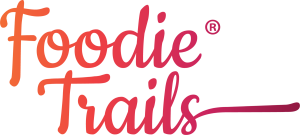Melbourne Foodie Culture – The many layers that make up multicultural Melbourne as we know it today.
Melbourne is one of the most multicultural cities in the world, experiencing many waves of migration from all over the globe. The diversity of our communities has contributed to an ever-evolving melting pot of history, food and culture.
Victorians come from more than 200 countries, speak 260 languages and dialects and follow 135 religious faiths and came here by FOUR main waves of migration.
The first wave was European settlement in the 1830s by mostly Anglo-Celtic people who displaced the area’s original inhabitants, the people of the Kulin nation. The arrival of Batman and Fawkner from Tasmania was quickly followed by the officials from Sydney setting up the customs house, now known as the Melbourne Immigration Museum.
The indigenous community grew food for consumption and foraged the lands. Foods of animal origin included kangaroo and wallaby, possum and wombat, and penguins (both the flesh and the eggs) and various molluscs and crustacea. Their plant menu included fruits such as the native cherry, native currant and kangaroo apple and vegetables such as the native potato and native carrot.
The British arrival drastically disrupted Aboriginal society and its food culture – by 1830 a million sheep grazed on lands once the territory of grazing marsupials. Traditional English foods like pies, meat and veg were their staples.
The second wave was a flood of hopefuls from all over the world trying their luck during the 1850s Gold Rush. The gold rush brought people to Australia with the majority being English, Irish, Scottish and Chinese. This led to further Aboriginal dispossessions, especially inland from the early Melbourne settlement. The influx saw the arrival of significant numbers of Chinese.
The goldfields diet was largely mutton and damper, but Chinese cookshops also played a role in the food scene, selling mainly European style food, soups, plum puddings, roast meat.
The third wave was post-WWII refugees and displaced people from Europe as well as assisted migrants to bolster Australia’s population.
By 1976, 20% of the city’s population spoke a non-English first language. Arrivals from Vietnam and Cambodia played a big role in this era. Back before we could get bánh mì at the airport or phở at a food court, Vietnamese food was exclusively the domain of family-run kitchens in yet-to-be gentrified suburbs. In the late '70s and early '80s, food was a means of survival to newly arrived refugees. Cooking—whether from a home business or at a restaurant—was a way to make money while still learning English.
In recent years, large numbers of international students have contributed to the multicultural fabric of Melbourne. From the year 2000 until 2014 only 16% of international students have stayed back as permanent residents in Australia.
It is now widely accepted that Australia is a multicultural society and will continue to be so. Our streets are lined with cafes and restaurants from around the world and the flavours continually develop. With Ethnic precincts to suit your fancy only in Melbourne are we lucky enough to be transported to another country within our city. Some notable precincts are:
Italian – Lygon Street, Carlton
Greek – Oakleigh
Little India – Dandenong
African – Footscray
Vietnamese -Victoria Street, Abbotsford
Chinatown – Little Bourke Street, Melbourne CBD
If you want to experience Melbourne’s Foodie Culture join a Foodie Trails Tour and let their knowledgeable guides help you taste, experience and explore Melbourne through their eyes.


